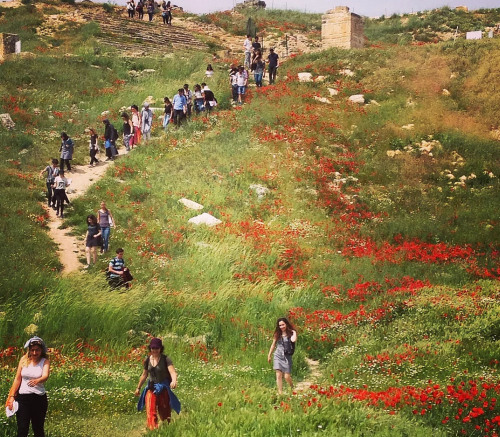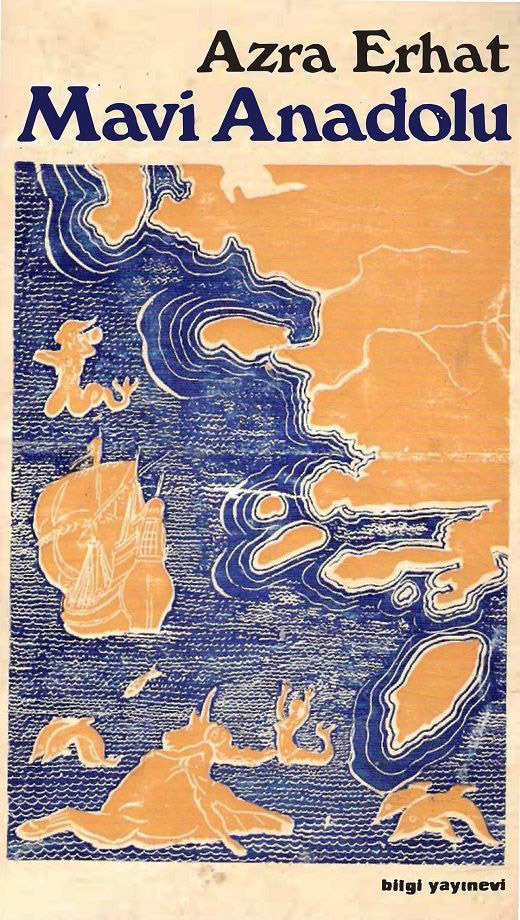
The debate on comparing “who knows more, a traveler or a reader,” might be a long-standing cliché, but still pleases everyone who enjoy both.
Certainly, they complete each other and most of the good stories come out of travels! From the ‘Odyssey’ to the modern times, it has been the core of many books, films and songs. ‘Around the World in Eighty Days’ or only turning back home, a journey has always the potential to bring adventure, experience, and knowledge.
As a researcher focusing on antiquity, traveling is—fortunately—one of the methods of learning as well as also a voluntary duty in summer. During my undergraduate studies, the necessary course “Ancient and Byzantine Architecture” included—traditionally—a trip to the western Anatolia which provided the opportunity to explore the ancient cities to us, the students of architecture on their first year.
The short four-day program was efficient to visit Didyma, Priene, Miletus, Aphrodisias, Magnesia, Hierapolis, and Laodikeia. I remember that the incompleteness in everything we see was a disappointment for some of us who were expecting huge temples and gigantic theaters. (By the way they were the most evident remains!) Even if these trips were not the was not “the moment” that I decided to study architectural history, I started to enjoy the empty and sometimes tedious landscapes, which come to life with what I hear or read. My experience may also have been close to a typical satisfaction of any tourist walking after the guides. However, when the surrounding gets wilder one cannot be dependent on someone, then an elaborated observation and wider research becomes necessary before the departure, in order to create its own imaginative game!
The excursions begin with the archival research which allows to re-experience the memories from previous trips and also see the transition or to make comparisons. Apart from our own diaries, the research history is always requisite to be considered. Thus, we get interacted with the paths the other researchers followed and recorded what are already vanished. Especially the travel notes constitute key references in various fields. For the archaeology in Asia Minor the travel books of foreign travelers from the 17th century to 19th century are rich resources. Their objectivity for any detail might be suspicious; however, once entered this world, I also enjoy them as novels. Each has its own “way” to perceive the environment, and thanks to the most unnecessary details they mention, the scene—whether fiction or reality—becomes complete.
Some famous travelers including Richard Chandler, François René de Chateaubriand, Charles Mc Farlane, F. V. J. Arundell, and Charles Texier witnessed the village of Menemen (Izmir) where I make my research on one of its small hamlets, Buruncuk. None of them describes the ancient site Larisa (Buruncuk) that I am working on directly, but while passing there, some mention its name and draw an image within an itinerary. In 1828, C. Mc Farlane tells how they crossed the Hermos River with men and animals in fear; Arundell in 1830 takes the note on their rest in the han in Menemen, complains about the unexpected guests but also makes fun of it: “by this self-invited society, that we arose after a night of misery, and vented our discontent by changing the name of Many-men, in to another more appropriate.” Among them Richard Chandler was a member of the famous Society of Dilettanti, a special “dining club” for a group of young British aristocrats, active in 18th century. In addition to discussing art on dinners, they have organized travels around to explore the ancient Greek art. Therefore, the travel itself becomes a professional work to be carefully completed and of course taken as a serious task. In 1764, R. Chandler with William Pars, a young painter chosen for this travel, and N. Revett, an architect, embarks at Gravesand. The importance of their mission is underlined with the instructions of the society:
“Whereas the Society of Dilettanti have resolved, that a person or persons, properly qualified, be sent with sufficient appointments to some parts of the East, in order to collect informations, and make observations, relative to the ancient state of those countries, and to such monuments of antiquity as are still remaining, (…)” (Chandler 1971, 5). Then six instructions are listed to facilitate their orientation and to explain their duties. The second one describes the expected work on site: “fixing upon Smyrna as your headquarters, you do from thence make excursions to the several remains of antiquity in that neighbourhood, at such different times, and in such manner, as you shall, from the information collected on the spot, judge most safe and convenient, and that you do procure the exactest plans and measures possible of the buildings you shall find, making accurate drawings of the bass-reliefs and ornaments, and taking such views as you shall judge proper; copying all the inscriptions you shall meet with, and remarking every circumstance which can contribute towards giving the best idea of the ancient and present state of those places.” (Chandler 1971, 5-6).

Following further notes and the financial issues, finally in the last instruction the society warns the excursion group not to fight with each other (!):
“(…)that perfect harmony and good understanding, which is so necessary, as well to your own happiness, as to the success of the undertaking, will subsist among you; yet, in order to prevent any possible dispute, which might arise about different measures, in the course of this expedition, we expressly declare, that the direction of the whole is hereby lodged in Mr. Chandler, assisted by Mr. Revett: and though Mr. Revett and Mr. Pars should protest against any measure proposed by Mr. Chandler, it is our meaning, that any such difference of opinion should not in the least interrupt or suspend your operations, but that, at the same time that such persons as dissent from or disapprove of what is proposed, shall transmit to us their reasons for such dissent, they do notwithstanding continue to pursue Mr. Chandler’s plan, till they receive our further orders for their conduct” (Chandler 1971, 6-7).
These travel notes are mostly analyzed as part of art movements or orientalism, but they are also good examples for the gravity of the travelling concept itself. Besides a certain discipline, the journey cannot ignore the pleasure of sightseeing and sharing moments. A similar approach exists in Azra Erhat and her friends’ boat trips to western Anatolian coasts. They don’t follow a strict mission but the intellectual group is highly conscious of the richness of the cultural history and natüre of Asia Minor. Erhat, the well known translator of Homer in Turkish, published these legendary travels as ‘Mavi Anadolu (Blue Anatolia)’ in 1957 and ‘Mavi Yolculuk (Blue Voyage)’ in 1960.

Concerning the group members and their experiences, their voyage can also be evaluated as a unique art form. In her books, Erhat aimed to create a full guide addressing the travelers, explained the philosophy behind and how people can make holidays avoiding the industrial tourism.
In primary school, the question “What did you do last summer?” or “could you please describe your holiday” were the questions for the first essays after holidays at school, and also the curious question with friends after a long school break. Quite similarly in the Autumn of 2016, after being back from the fieldworks and extended holidays, our discussions and sharing memories went far beyond with Bilge Ar, a close friend and a good travel company of mine. The interest in learning from each other’s travels evolved into the idea of making our own tourist guides with experienced friends’ references and suggestions. That is how we started organizing a seminar in our faculty: “Architectural History Travel Notes.”

Friends visiting different places during the year were invited to share his/her memories. Some of the presentations were as part of an academic research, some were just touristic. These evening talks in the cold Istanbul days united a small group of friends which reminded the appreciation of the journey itself. From Persepolis to Iceland, Tiflis to Jolfa, each talk traced a unique frame. Now looking at this series fast forward, I remember them so vividly and excited as the posters hided in a way.
Nowadays as the spring is on its way, we started to enjoy the sunny weather on the terrace at ANAMED, and the conversations go on with the idea of organizing a small trip to somewhere. It is hard to decide the destination: Iznik, Çanakkale, Izmir, or even further east Kars? Even if it would not be realized, I am very happy to dream with fellow friends, who also take the excursions as a serious task and are currently on their journey!
References:
Chandler, R. (1738-1810) [Clay, E. (Ed.) 1971]. Travels in Asia Minor 1764-1765. British Museum: London.
Fig 1: Students at Hierapolis, May 2017
Fig 2: The theatre at Miletus, (Chandler, R. (1971) Travels in Asia Minor 1764-1765. British Museum, London, Cat.9)
Fig 3: Azra Erhat, Mavi Anadolu, 1969, Bilgi Yayınevi
Fig 4: Announcements of the seminar 2016-2017

